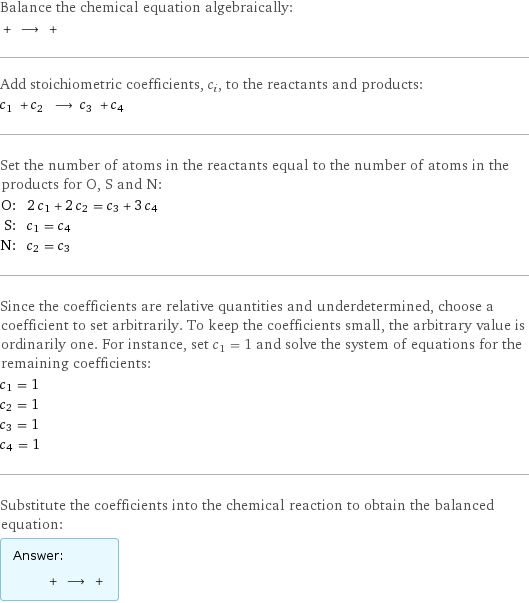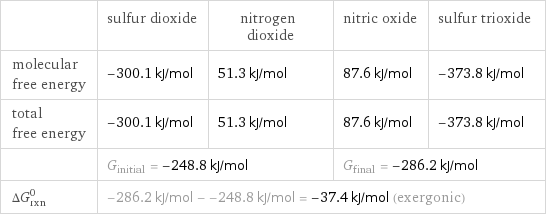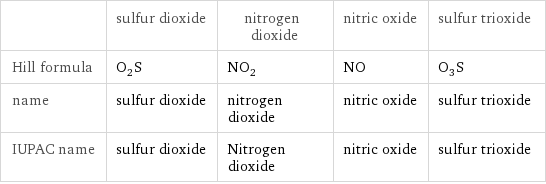Input interpretation

sulfur dioxide + nitrogen dioxide ⟶ nitric oxide + sulfur trioxide
Balanced equation

Balance the chemical equation algebraically: + ⟶ + Add stoichiometric coefficients, c_i, to the reactants and products: c_1 + c_2 ⟶ c_3 + c_4 Set the number of atoms in the reactants equal to the number of atoms in the products for O, S and N: O: | 2 c_1 + 2 c_2 = c_3 + 3 c_4 S: | c_1 = c_4 N: | c_2 = c_3 Since the coefficients are relative quantities and underdetermined, choose a coefficient to set arbitrarily. To keep the coefficients small, the arbitrary value is ordinarily one. For instance, set c_1 = 1 and solve the system of equations for the remaining coefficients: c_1 = 1 c_2 = 1 c_3 = 1 c_4 = 1 Substitute the coefficients into the chemical reaction to obtain the balanced equation: Answer: | | + ⟶ +
Structures

+ ⟶ +
Names

sulfur dioxide + nitrogen dioxide ⟶ nitric oxide + sulfur trioxide
Reaction thermodynamics
Gibbs free energy

| sulfur dioxide | nitrogen dioxide | nitric oxide | sulfur trioxide molecular free energy | -300.1 kJ/mol | 51.3 kJ/mol | 87.6 kJ/mol | -373.8 kJ/mol total free energy | -300.1 kJ/mol | 51.3 kJ/mol | 87.6 kJ/mol | -373.8 kJ/mol | G_initial = -248.8 kJ/mol | | G_final = -286.2 kJ/mol | ΔG_rxn^0 | -286.2 kJ/mol - -248.8 kJ/mol = -37.4 kJ/mol (exergonic) | | |
Chemical names and formulas

| sulfur dioxide | nitrogen dioxide | nitric oxide | sulfur trioxide Hill formula | O_2S | NO_2 | NO | O_3S name | sulfur dioxide | nitrogen dioxide | nitric oxide | sulfur trioxide IUPAC name | sulfur dioxide | Nitrogen dioxide | nitric oxide | sulfur trioxide